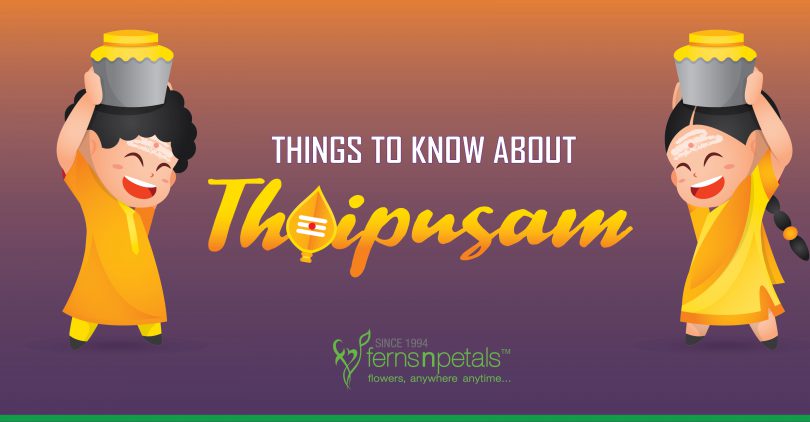Thaipusam is a Hindu festival celebrated to honour the victory of deity Lord Murugan over demon hordes. It is commemorated by the Tamil community on the full moon in the Tamil month of Thai that usually coincides with Pushya star known as Poosam in Tamil. Mainly observed in countries with the significant presence of the Tamil community, Thaipusam is celebrated in Singapore with great fun and fervour. The date of the festival changes from year to year as it is based on a lunar event. This year, Thaipusam will be observed on 8 February.
Have a look at some interesting facts about Thaipusam
- The name ‘Thaipusam’ comes from Tamil word ‘Thai’ that refers to the 10th month in the Tamil calendar and ‘Poosam’ is the name of a star in the Cancer constellation. During this festival, the star is known to shine at its brightest.
- According to Legends, Lord Shiva sent Murugan to help devotees who were being tormented by demons. He appeared triumphant and appeared before devotees holding a golden spear and seated on a silver chariot. That’s why this festival is dedicated to the Hindu deity Murugan.
- It is celebrated in countries where there are significant populations of Tamil Hindus, such as India, Singapore, Malaysia, Sri Lanka, Mauritius, Jamaica, Trinidad, and Tobago.
- During this festival, devotees pledge vows and undergo self-mortification as a sign of gratitude and hope that Lord Murugan will grant their wishes.
- The ‘kavadi’ is a large semi-circular structure usually carried by male devotees at this festival. It is hooked directly on the bodies of the men through hooks and chains. Similarly, women carry silver milk pots called ‘paal kudam’ and also have parts of their body pierced.
- The kavadi is made of aluminum and covered with coloured and peacock feathers with the symbol of Lord Murugan at the top. The kavadis weigh around 30 kgs and can reach 3 to 4 meters in height. But the people carrying these structures do not feel any pain, as they are in a spiritual trance.
- Some devotees carry kavadi in hope that sick loved ones will be healed of chronic diseases.
- The kavadi-bearer observes strict celibacy. They eat pure, Sattvik food and avoid food that is devoid of stimulants such as caffeine and chocolate. They also abstain from intoxicating drugs and drinks and observes a 24-hour fast on the eve of Thaipusam.
- Participants wear yellow and orange colors, which are significant to Lord Murugan.
- The tongue and cheeks are pierced by two symbolic skewers as a gesture that a pilgrim sacrifices the gift of speech. Many pilgrims all shave their heads and walk long distances to reach the temple.
- Thaipusam is celebrated on a grand scale in Batu Caves, Malaysia that attracts over a million devotees and visitors each year. People climb 272 steep steps to the Hindu shrine inside the cave.
- In Singapore, the celebration of Thaipusam generally lasts for 2 days. One can witness the festivities anywhere between Sri Srinivasa Perumal Temple at Serangoon Road and Sri Thendayuthapani Temple at Tank Road.





